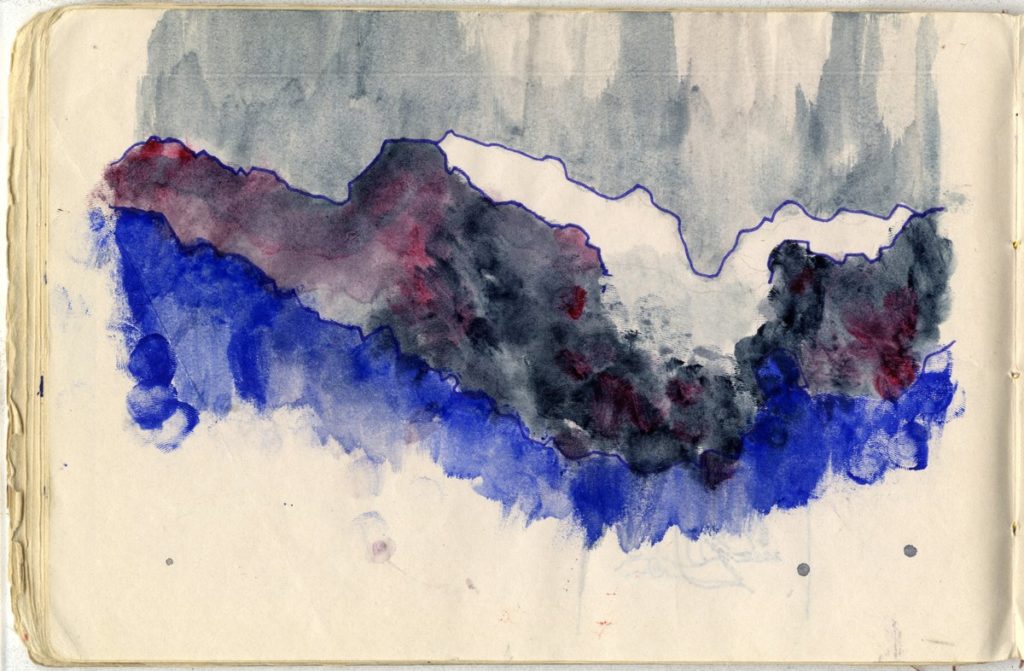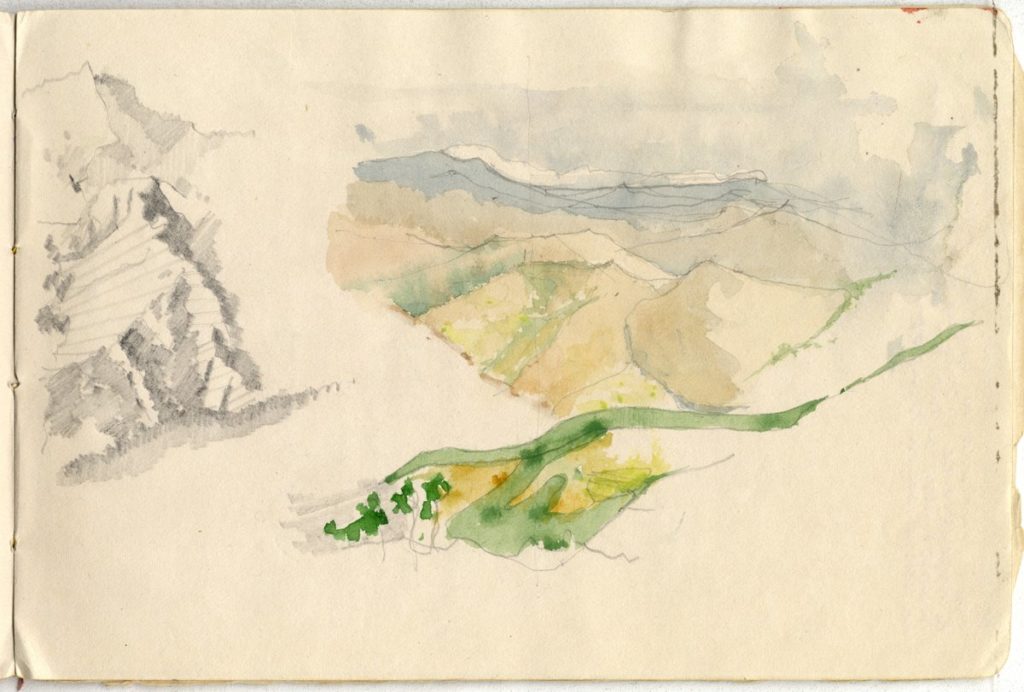Eric Parry: India, 1975
This sketchbook results from a journey through west and northwest India focussed on the study of low-cost settlements in Bombay and Ahmedabad. It followed a seven-month period of research around nomadic environments in Iran and Kuwait. This mind- and eye-opening time was spent with colleague Andrew Thorne.
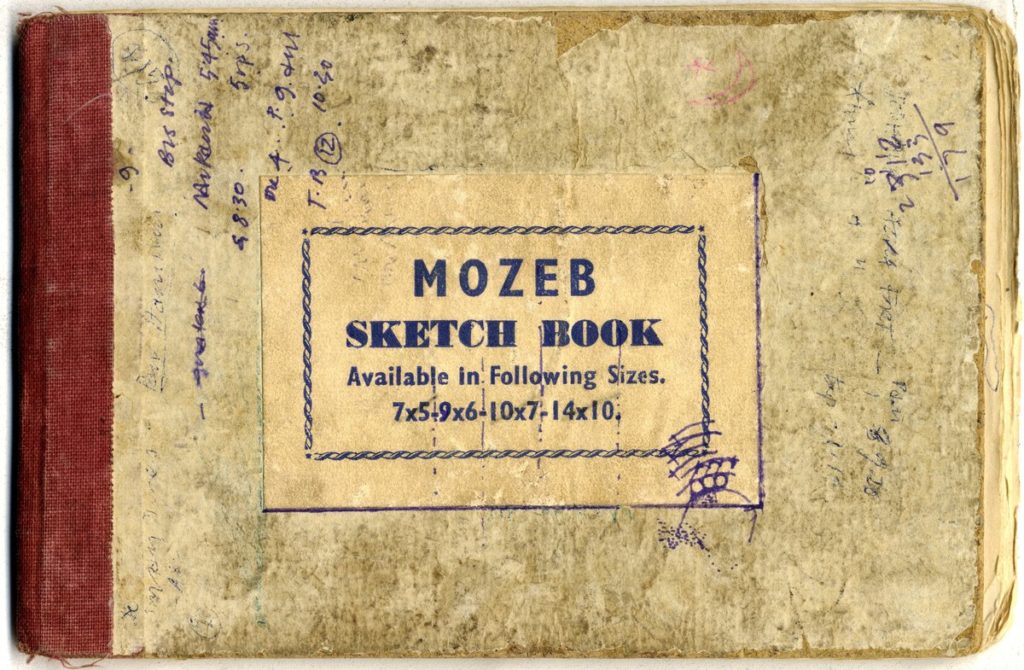
Going back to this point in ’75: this is what we found when we got to Bombay and then had to go and find the son in the village house. The structure in Bombay was – there were massive slums, social housing, structures of the traditional city, which were safe or club houses for predominantly young men, coming in from rural provinces with a base in the city, from which to work. So we had to find within the chaos of Bombay this address. We were accompanied by this young guy back to his village in Goa. Fantastic. This was not the hippy trail, but the village structure of Goa, of Portuguese influence, verandas that led onto a street. So this would be the landscaped village centred around a seasonal paddy field and then the productive gardens, then the street, the verandas, then the house. That is what these drawings refer to – this Goan villa type set within a landscape of vivid green.

The sketchbook draws me back to Bombay to look again at the safe houses. Then it takes us up to out of Bombay, north into the hills going up to Shimla.
This sketch shows a typical bar with a central, high-ceilinged area surrounded by balconied seating, fans and flickering light. The neon, a stark contrast to the dark streets, electricity shortings and the continuous pavement dormitory right outside.
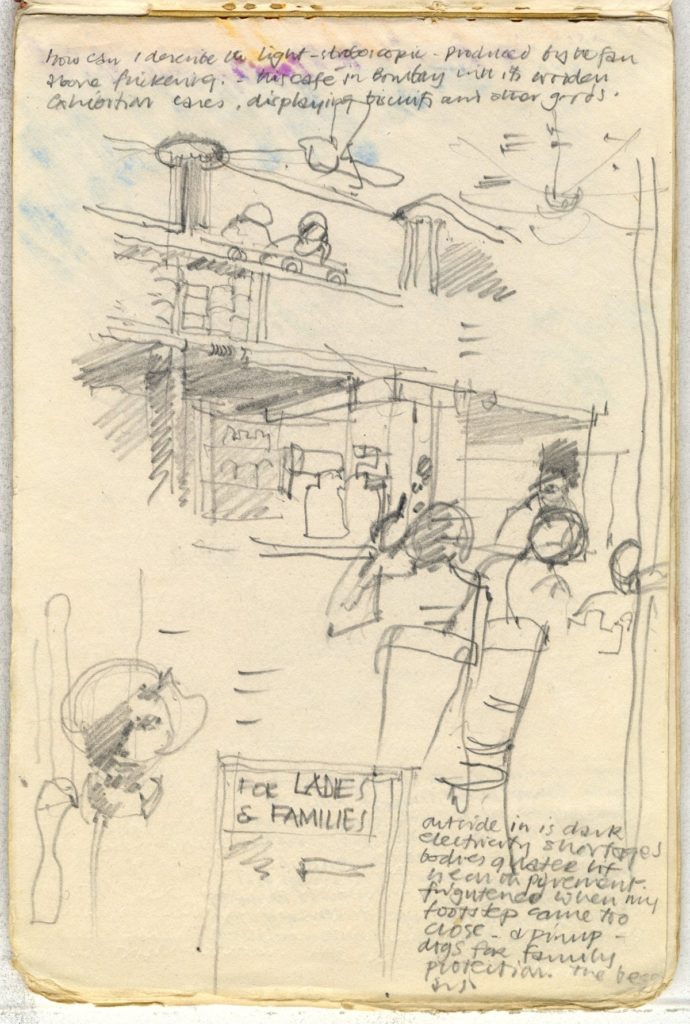

I think this was an impression – a visual note to myself of the descent by plane into the murky Bombay dawn. 29.03.75
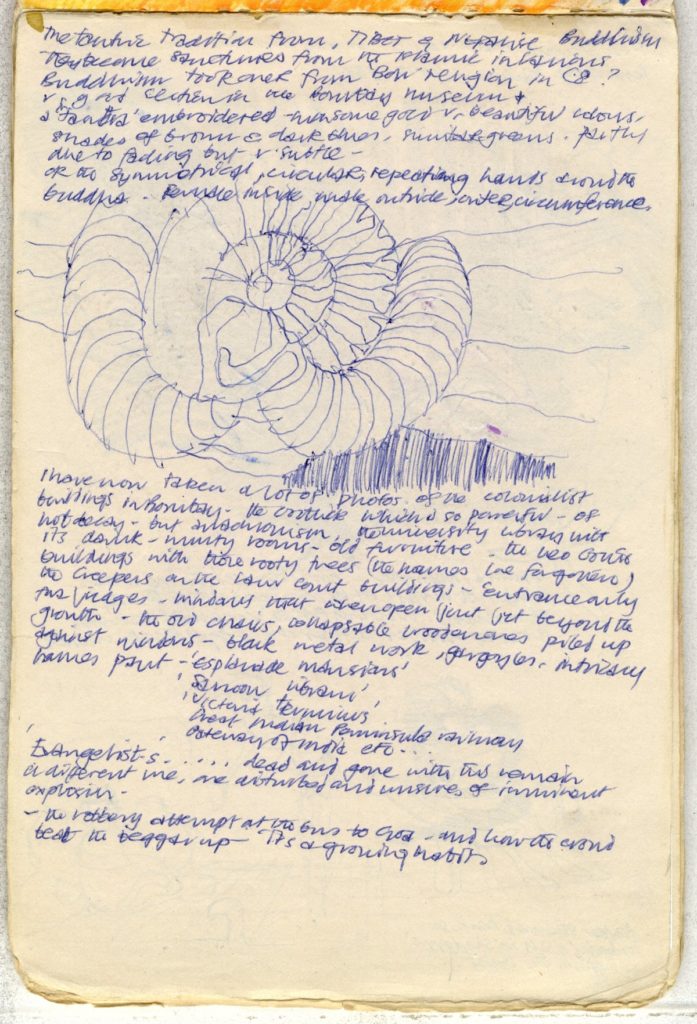
This page illustrates the unbelievably rich collage of India today. Notes on tantric traditions found in the museum, surprise at the endurance of the colonial buildings and the cut and thrust of the street.
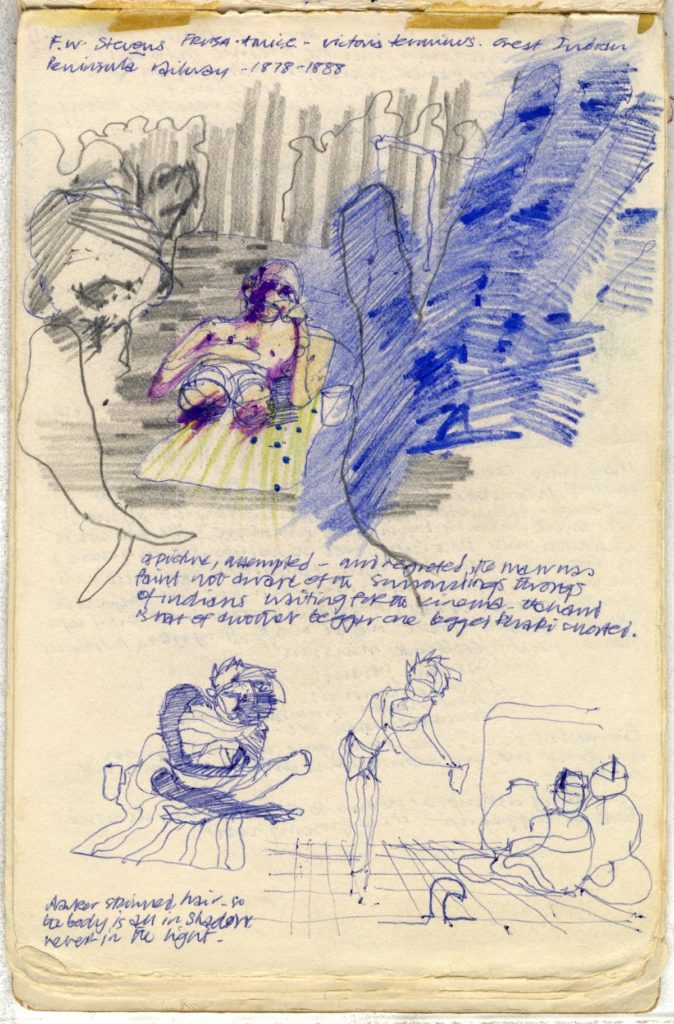
My note sums up the agony. A picture attempted – and regretted. The man was faint, not aware of the surrounding throngs of Indians waiting for the cinema. The hand is that of another beggar, one-legged, khaki shortened.
And then this is Jaipur. A very beautiful moment just watching this group of women sleep on the floor in the station whilst waiting for our train.
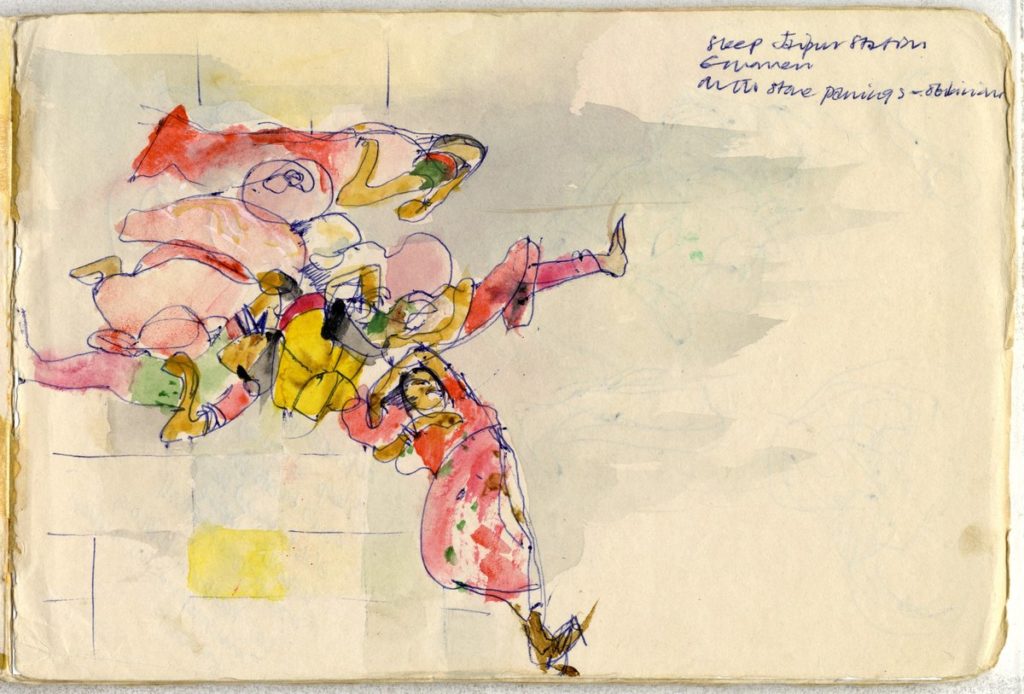
And then this is Kahn in Ahmedabad. It was amazing, this is ‘75. When did he die? ‘74. This actually is a very nice thing I showed [Balkrishna] Doshi, when he was in London last year, because he had generously spent an afternoon with us at his office and given us access to the thesis work of his students.
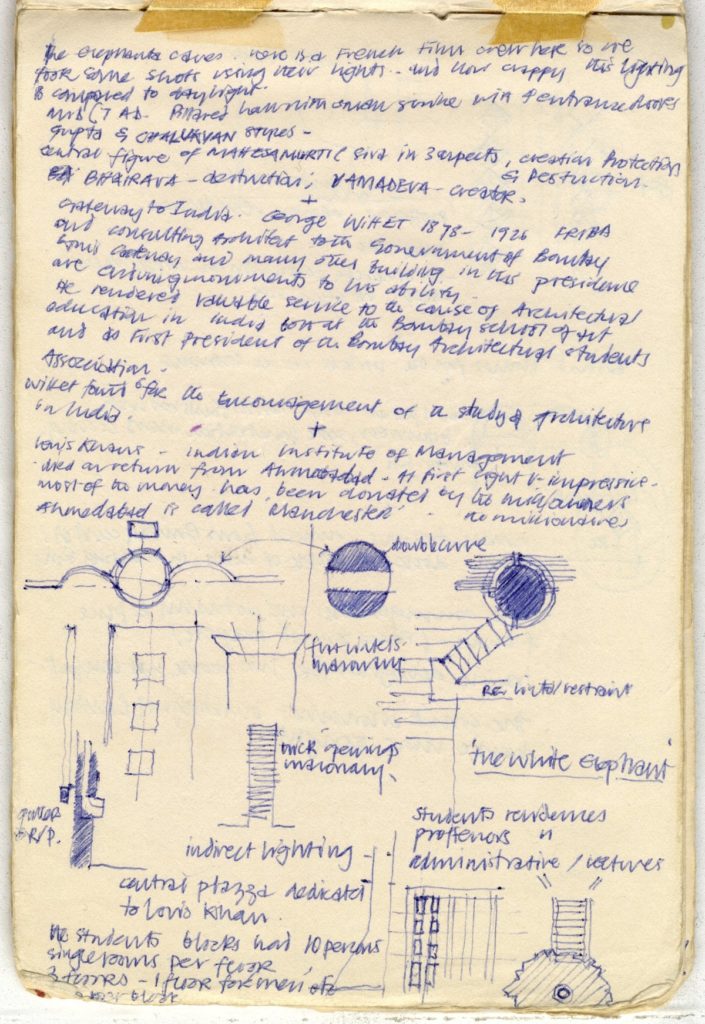
It seems strange perhaps now but our priority was to understand the successes and failures of the Vasna project amongst others; Kahn and Corb’s masterpieces were extraordinary but not the focus of our time in Ahmedabad. Most moving was the visit to Mahatma Ghandi Ashram at Sabarmati.
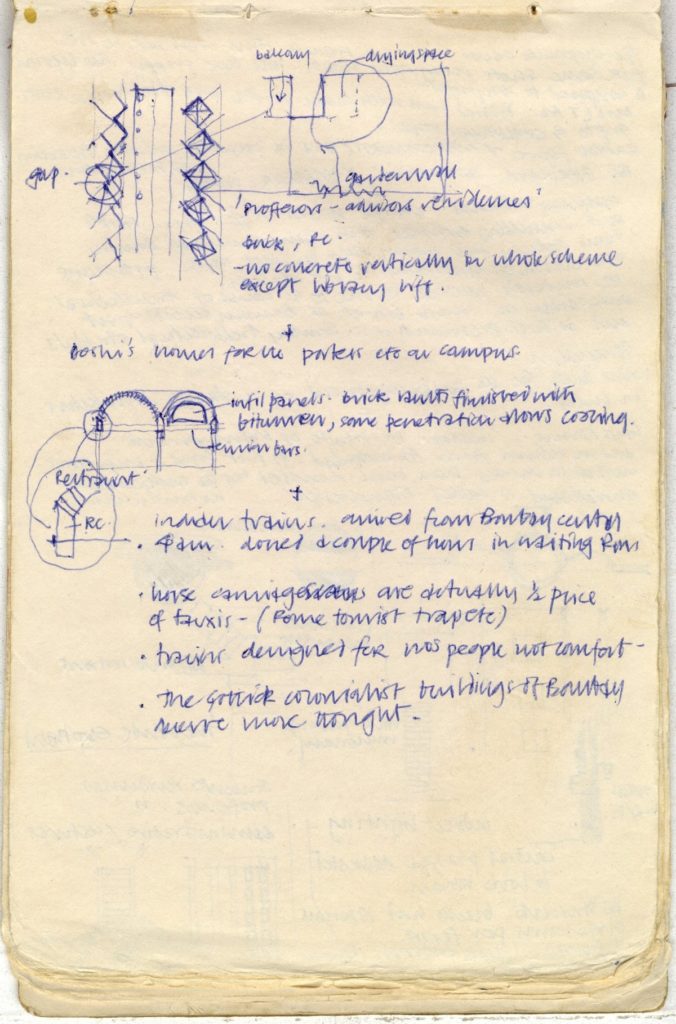
This is it. This is a note Doshi made to direct us to Kirtee Shah, an important figure as cofounder of ASAG – Ahmedabad Study Action Group.
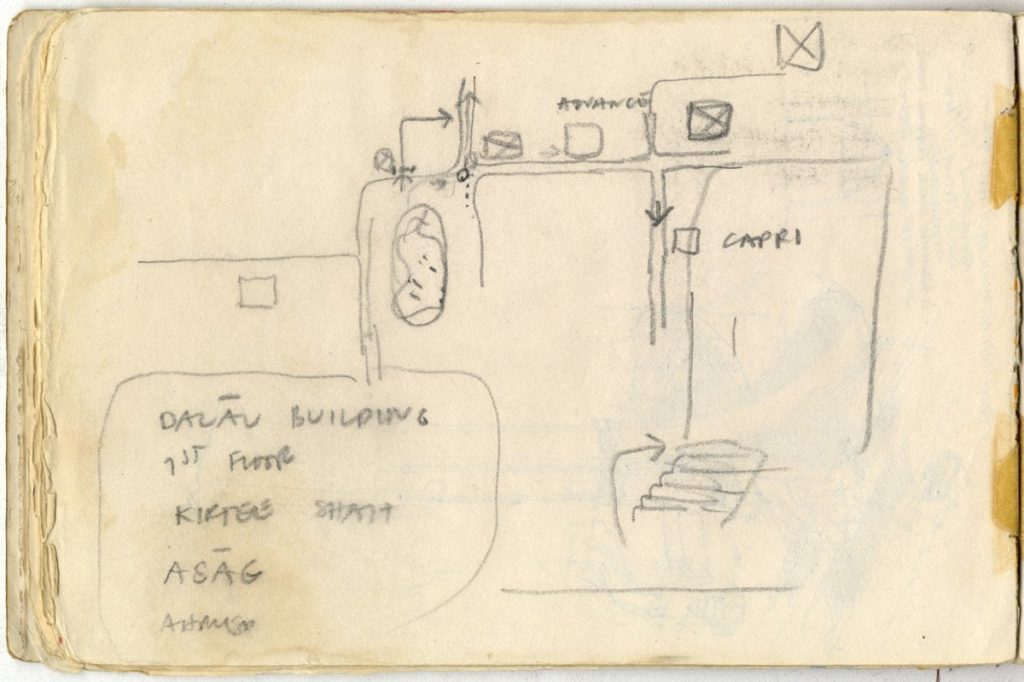
This next page of text refers to ASAG who are a group dealing with social housing – integrated urban programme development – doesn’t sound too hopeful … Kirtree Shah was running ASAG officially … to work within the given system. He himself is not a revolutionary, but he believes in fighting for the underprivileged, to help them help themselves. He believes in action, political regeneration. If his stimulus leads to revolution then he accepts it as a natural course of events, but he doesn’t see himself as revolutionary. The thing is to work with the squatters across castes and cultures – Muslims Hindus – there are these terrible riots. A lot of death and destruction, but actually the squatter encampments kind of survive, they had a better sense of cultural integration than anything that was in a more organised part of the city. So some incredible lessons and the question remains about the validity of relocation.
Then the world of … Jaipur, striking in its urban order after Bombay and Ahmedabad.
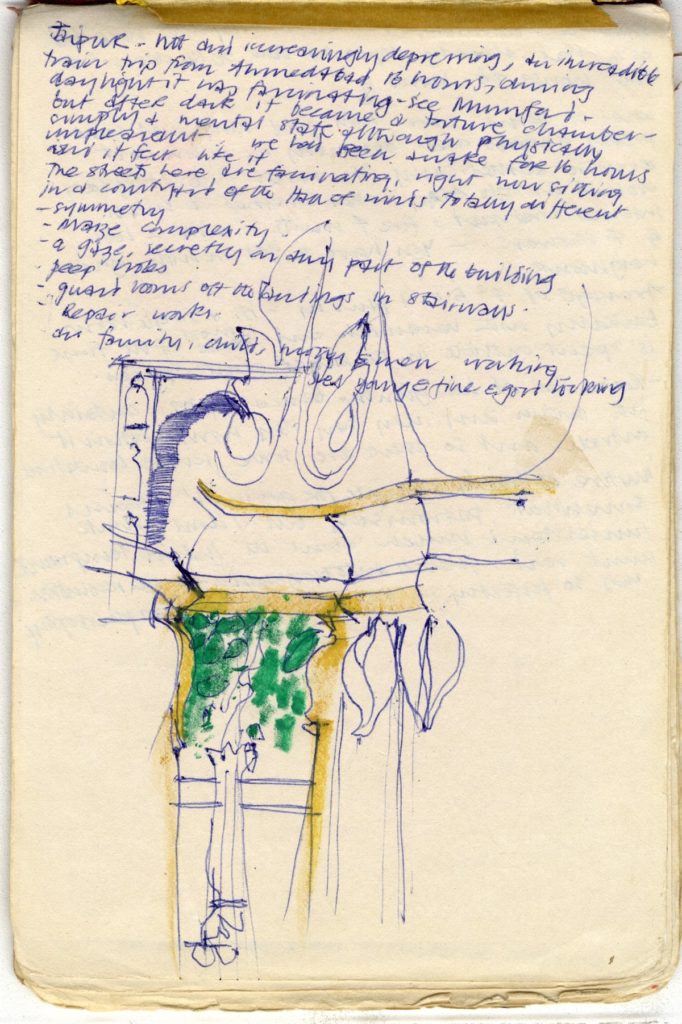

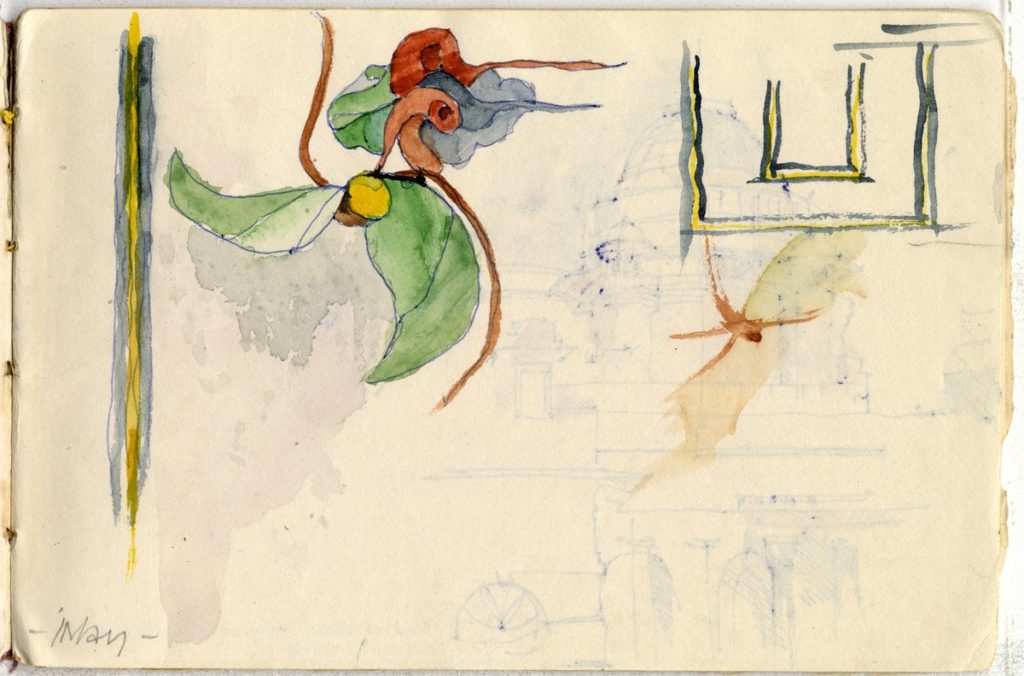
And then Lutyens. New Delhi and Rashtrapati Bhavan.
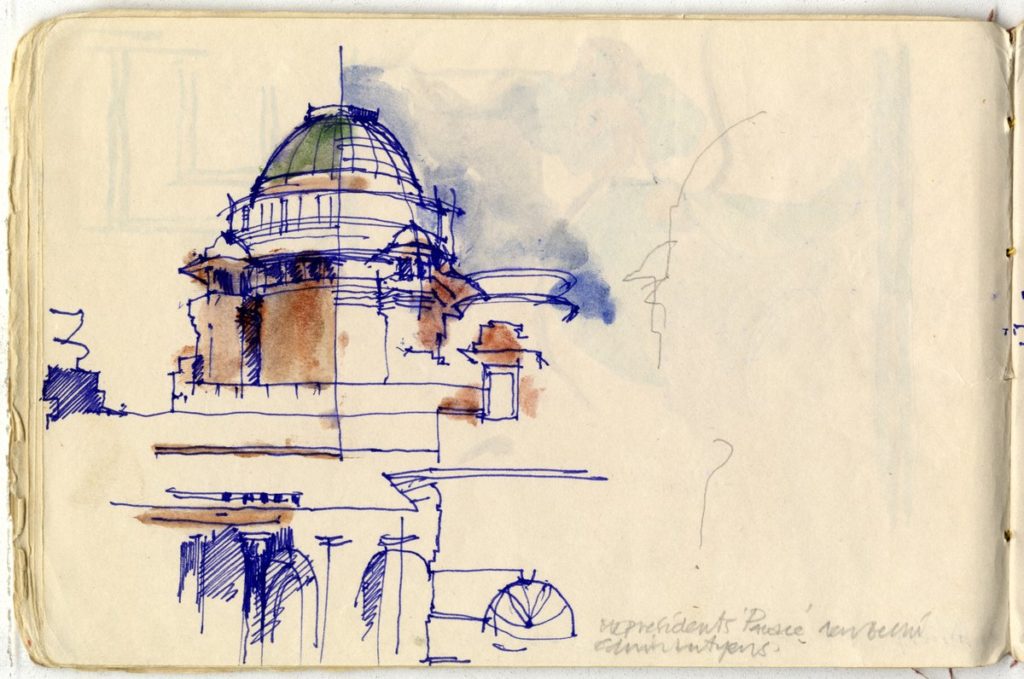
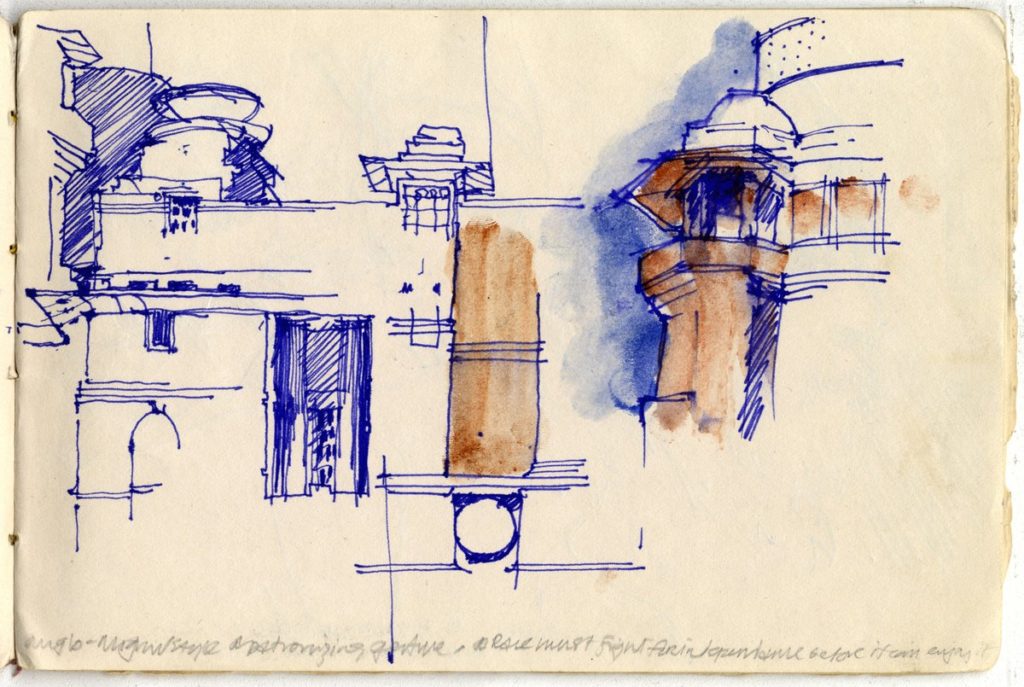
I ended up doing a building in St James’s Square – Lutyens is number 7, we did number 8. There it is. St James’s Square is made up of 23 houses on three sides of a 200 ft plot. The back had the mews of Apple Tree Yard. The Luytens building was for the Farrer brothers, two of whom were the royal lawyers. They allowed Lutyens to use the mews building as an annex to his office. This is where he laid out New Delhi, and made the Queen’s dolls house. The stone of Stephen Cox’s emerging figure comes from India, eighteen tons of fieldstone. He carved it into this great baluster rather than to a ubiquitous blue plaque.
Then this is my discovery of Chandigarh – the city, its governance and its moving monuments set against the backdrop of the foothills, which the artifice of the roofscape of the Palace of Assembly sublimely echoes.
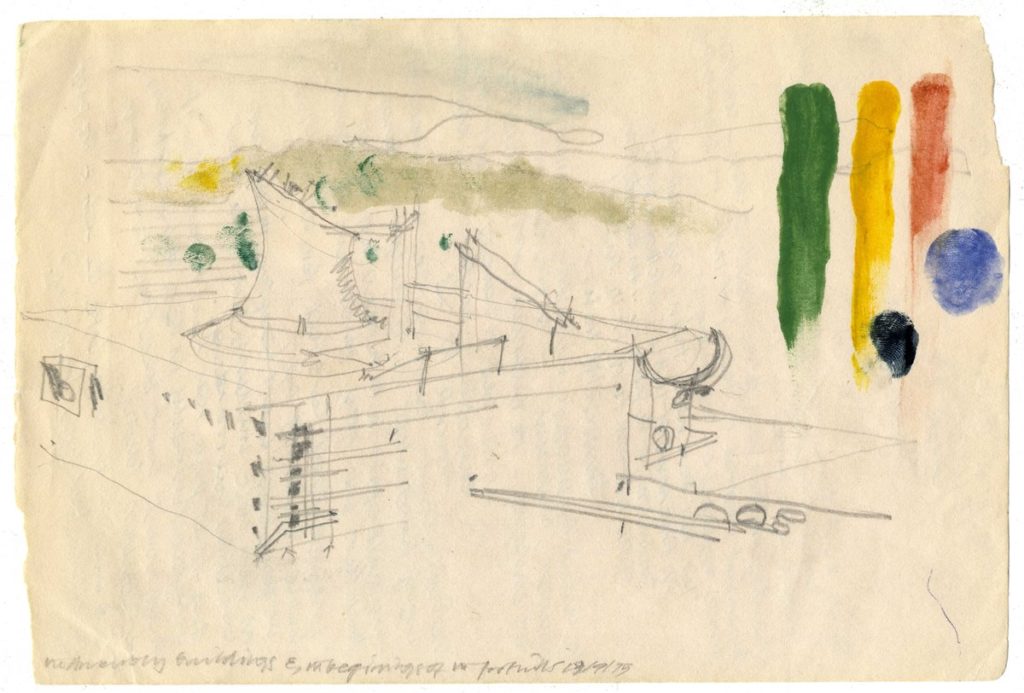
This brings you Amritsar and the Sikhs – that was an incredible thing to discover. They have the most beautiful approach to the diurnal cycle – from when you rise, in the very early morning, and until dawn really cracks, you are in silence, no conversation, no communication, a most meditative time. And then the noise of the city takes hold. I found Amritsar incredibly compelling – this sketch is about this, the role of the five symbols of sikhism and a calmness, they have such a dignified calmness, really wonderful.
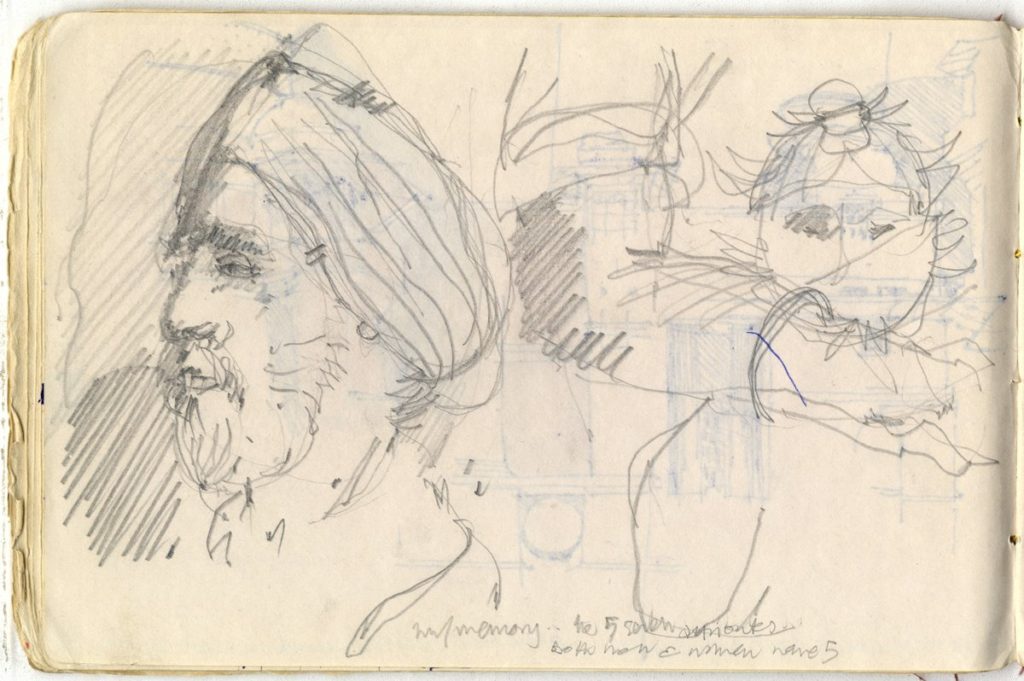
So we are April 1975 now. Shimla. Sublime landscape. Just beautiful. I am not a reckless mountaineer. This is forty-five years ago, but it is like yesterday.
